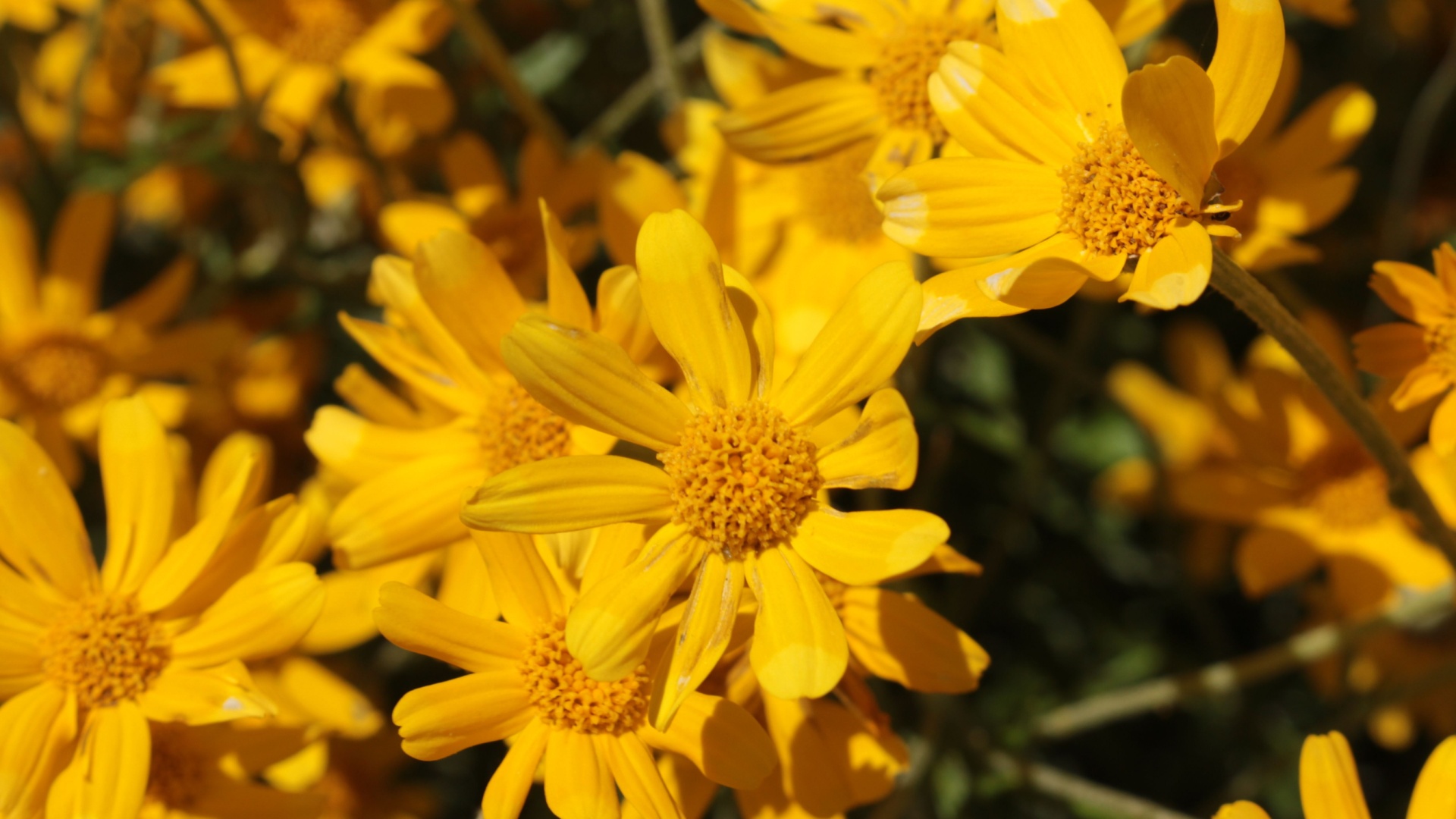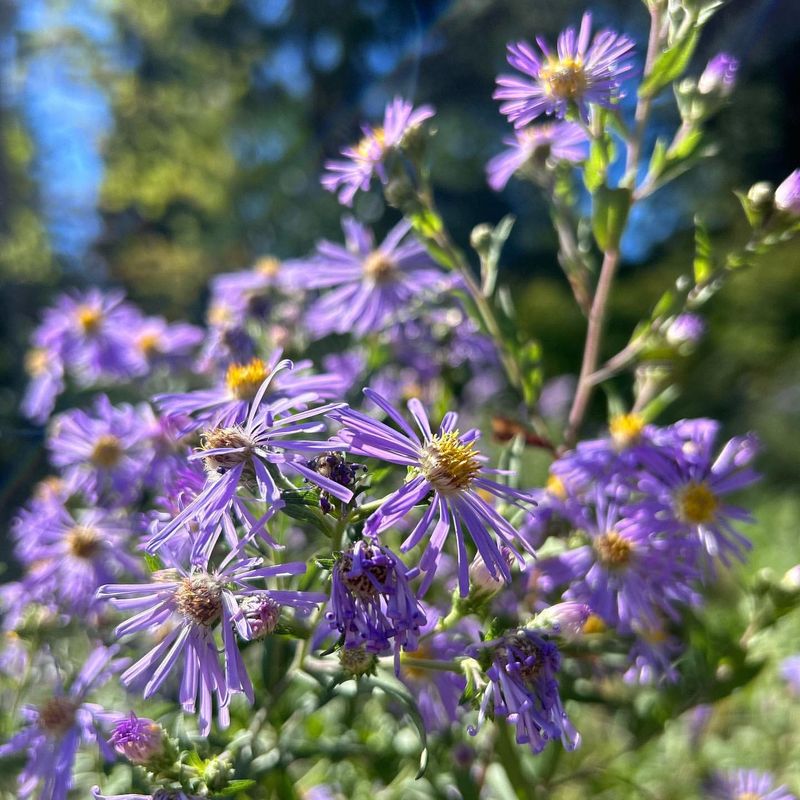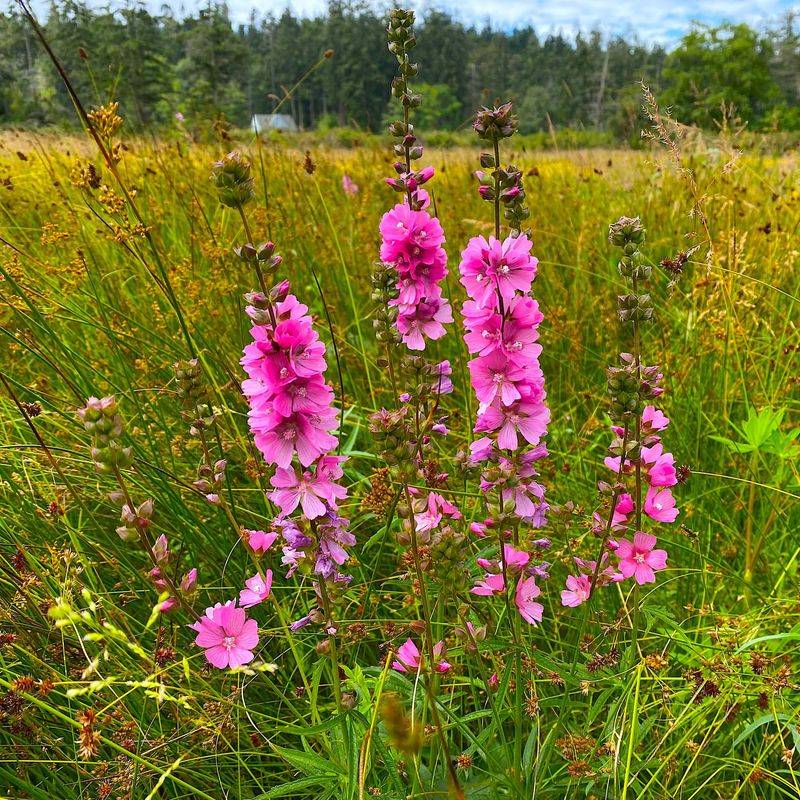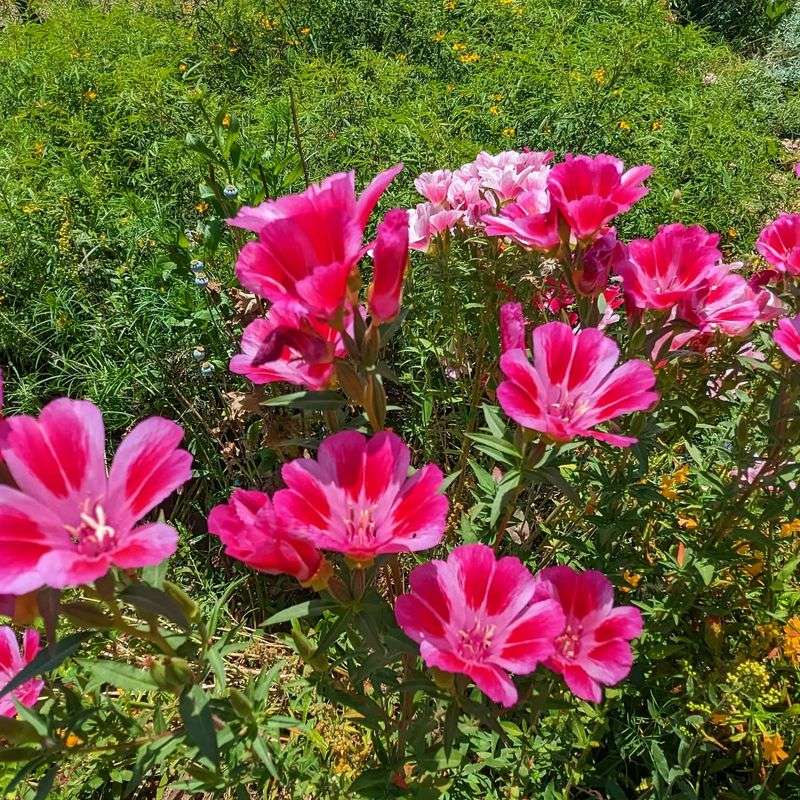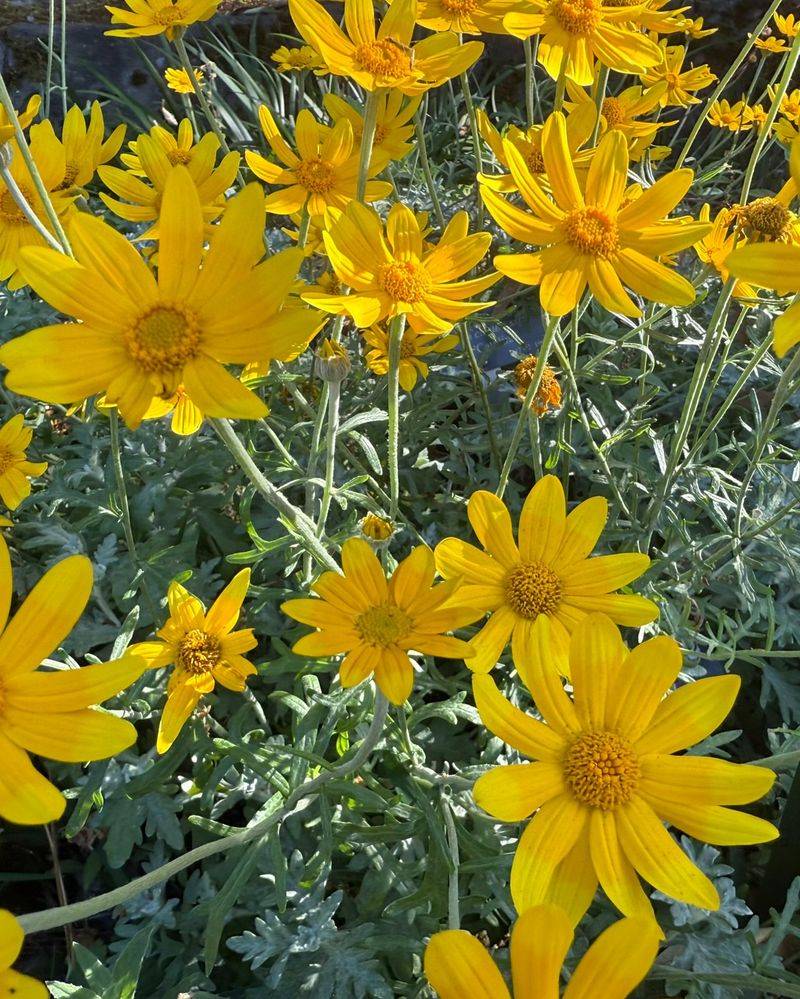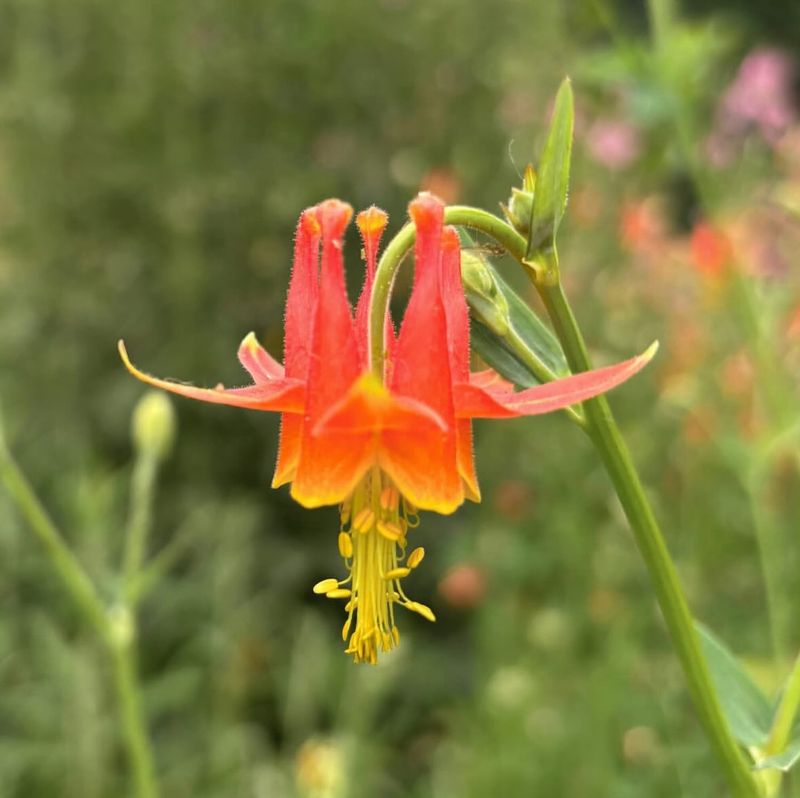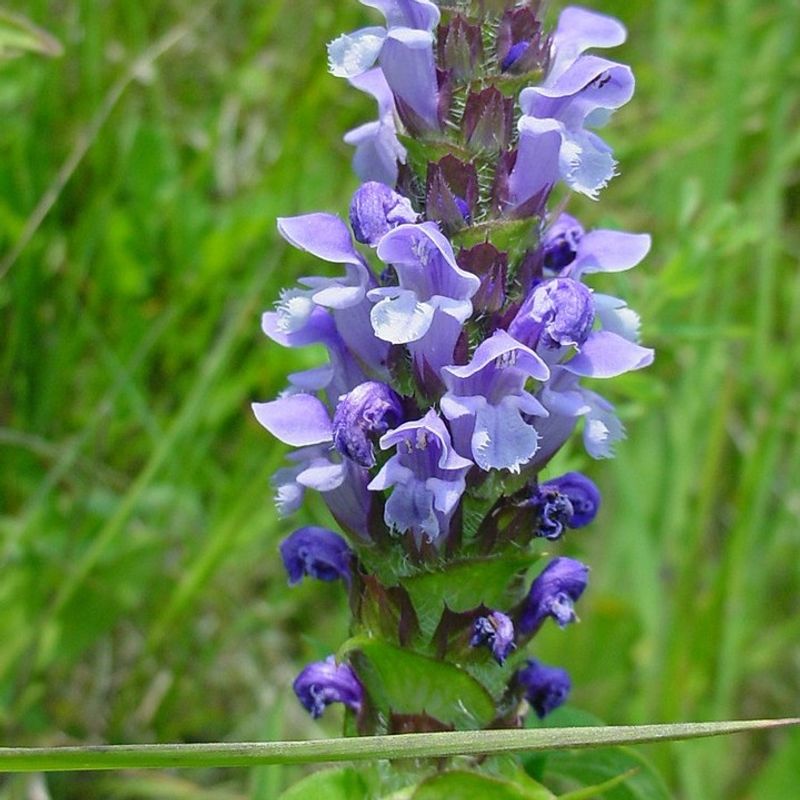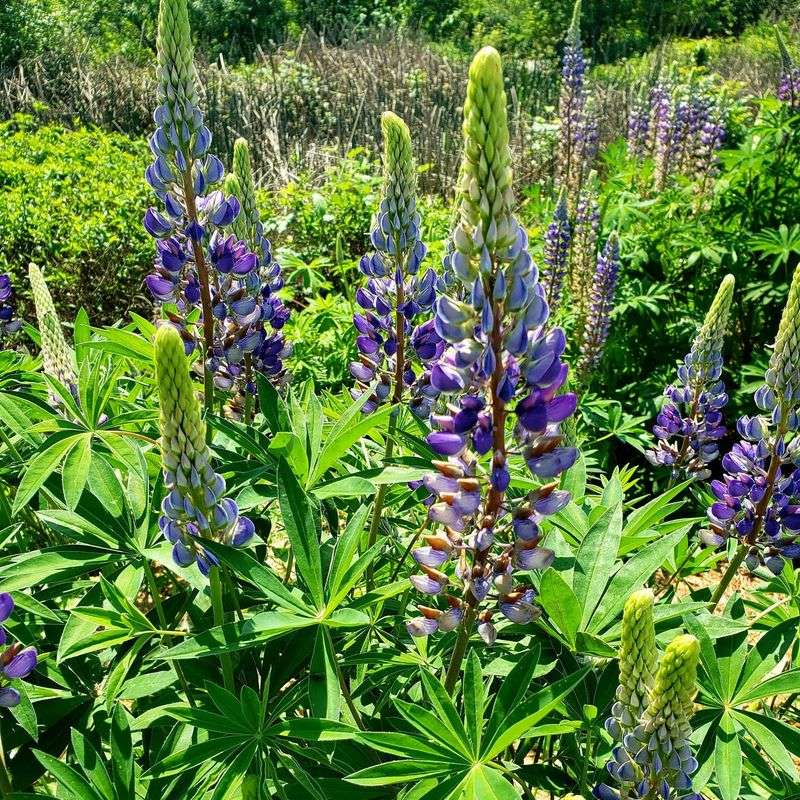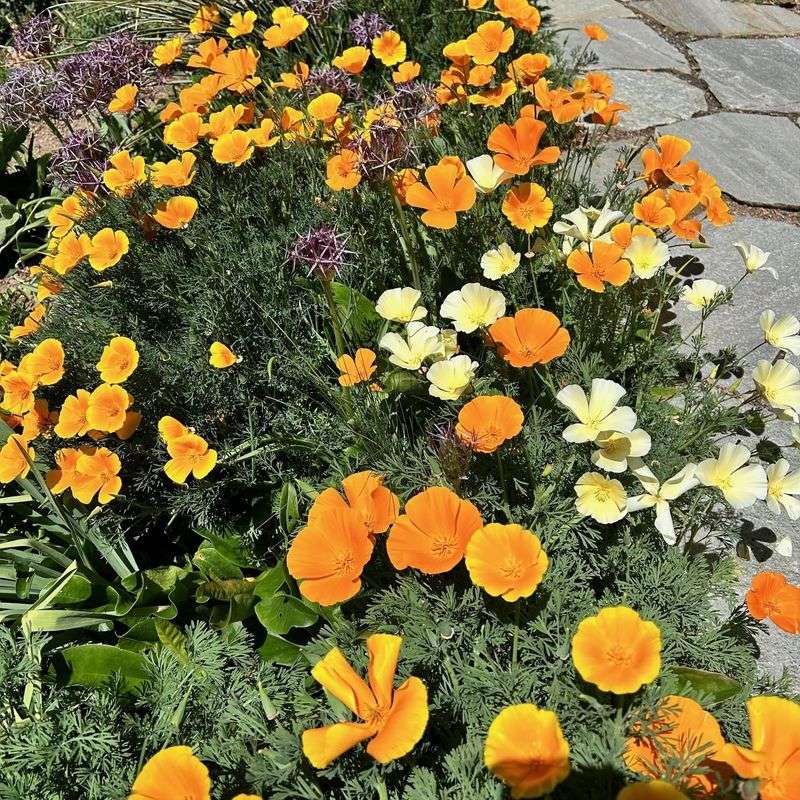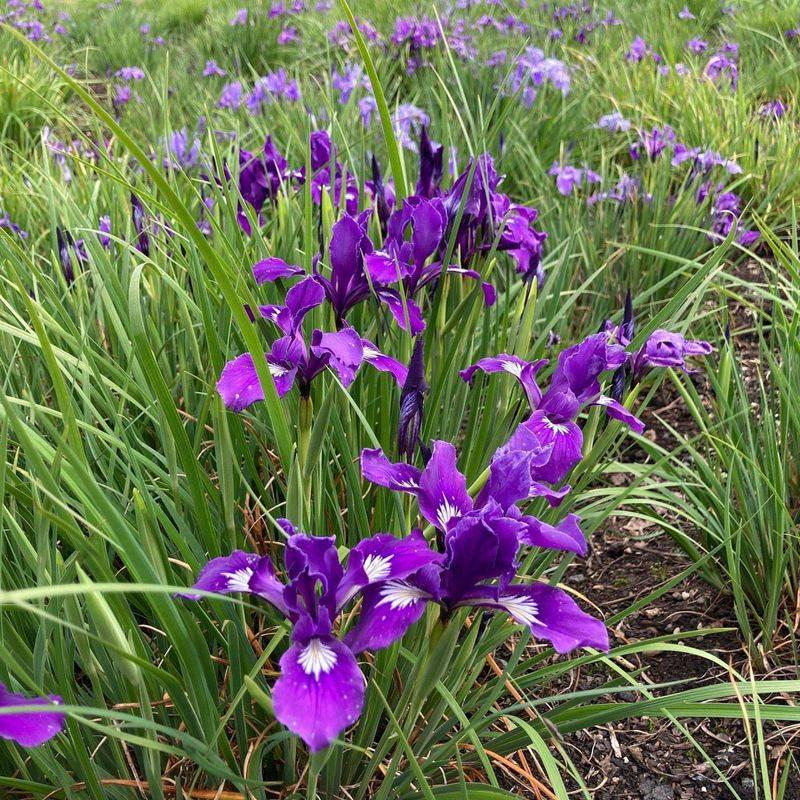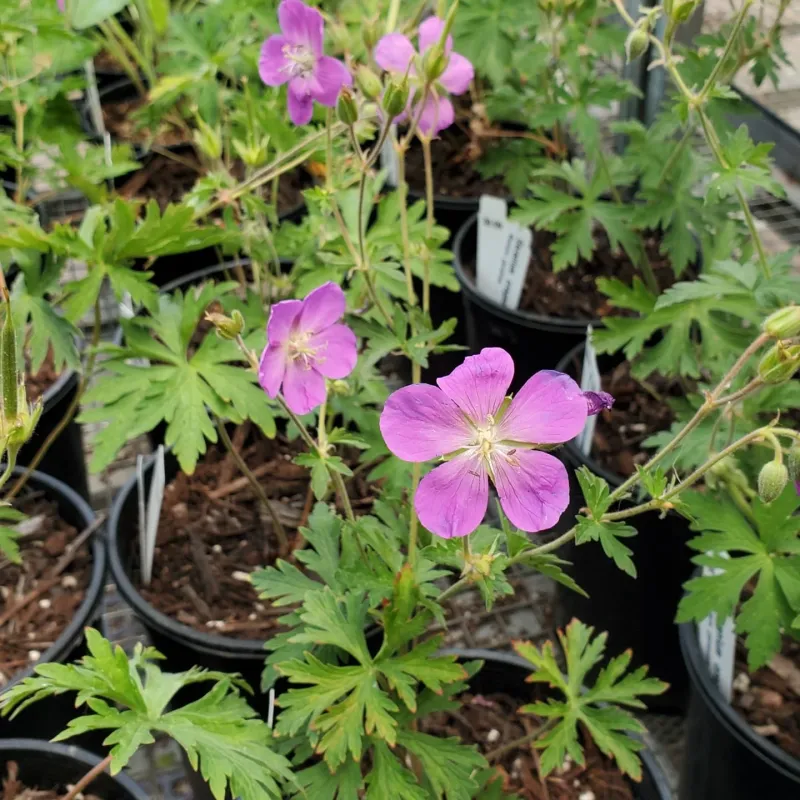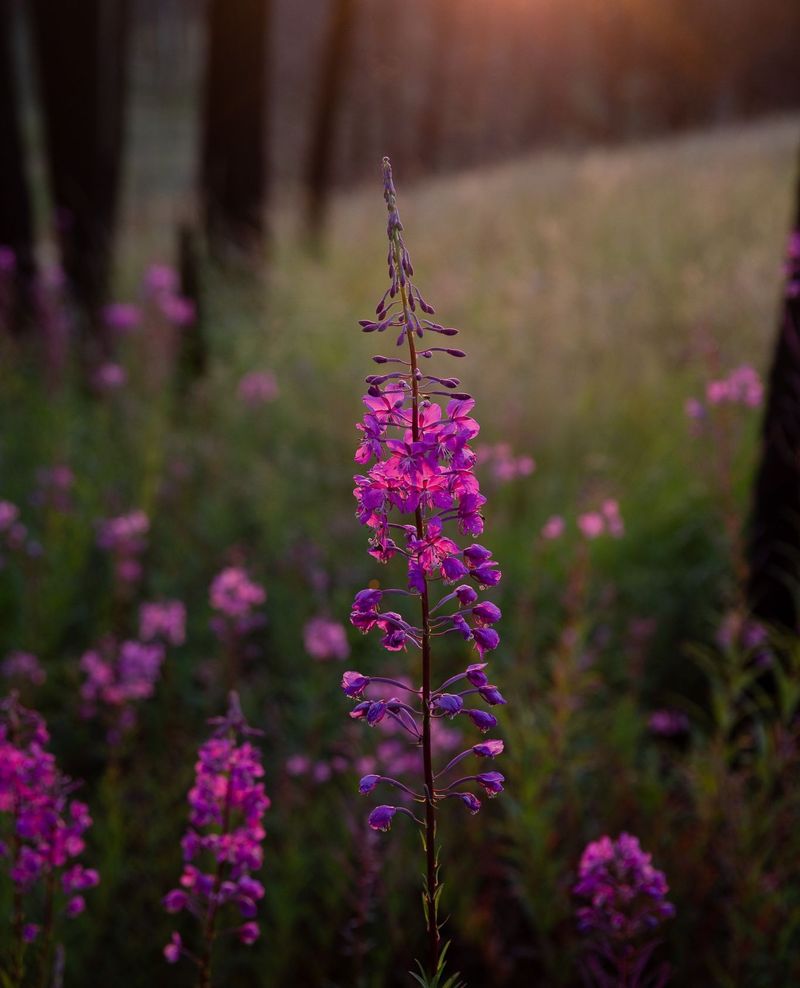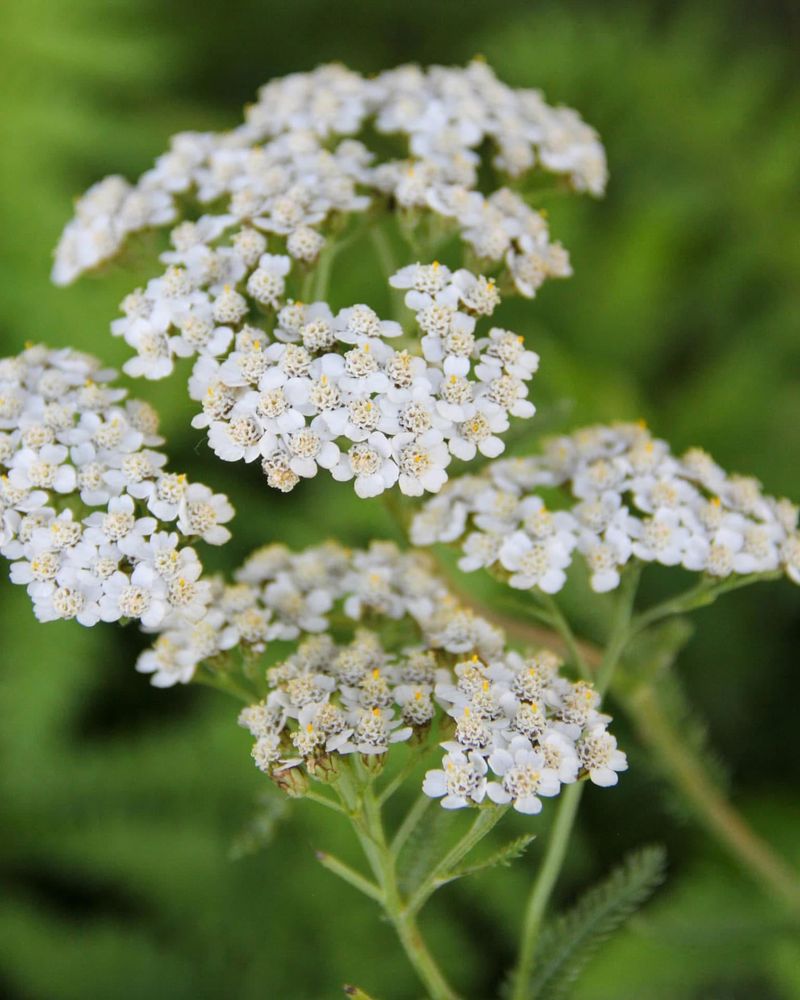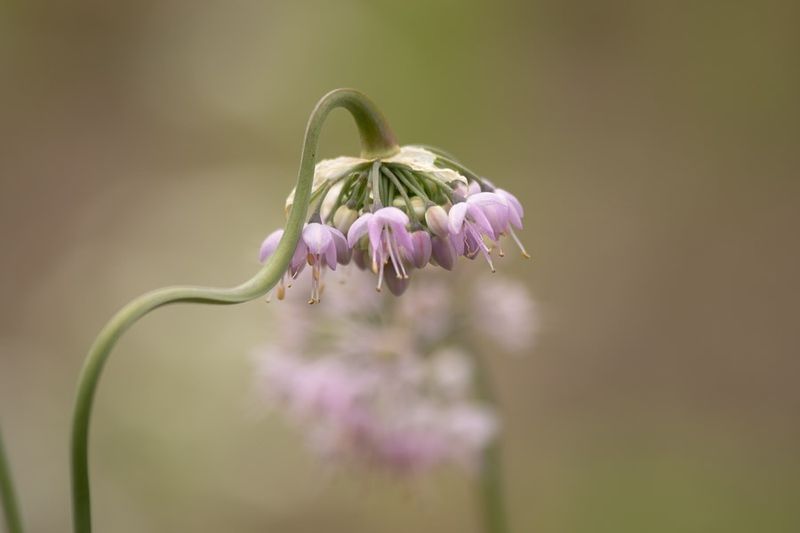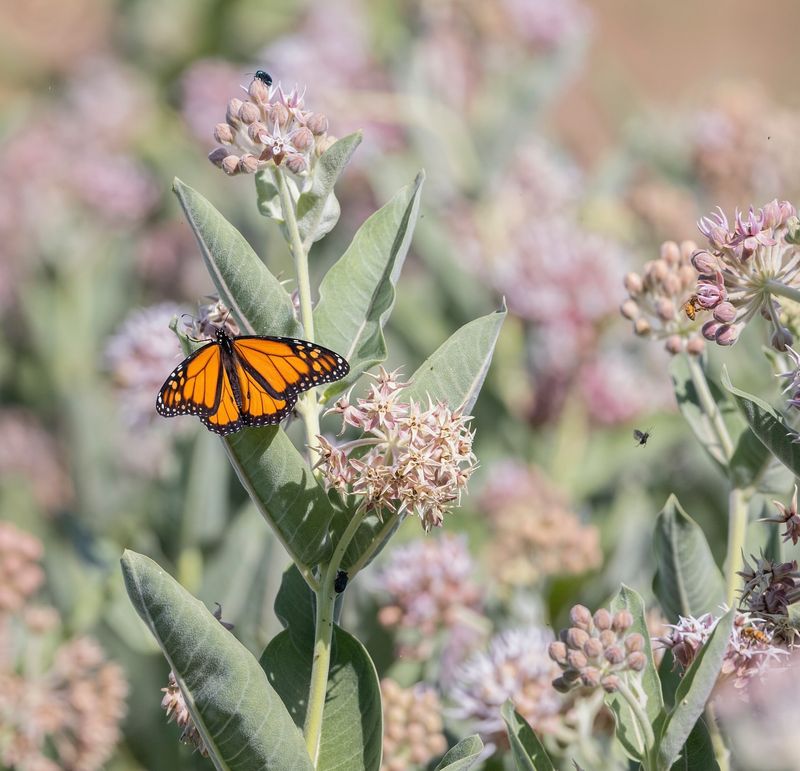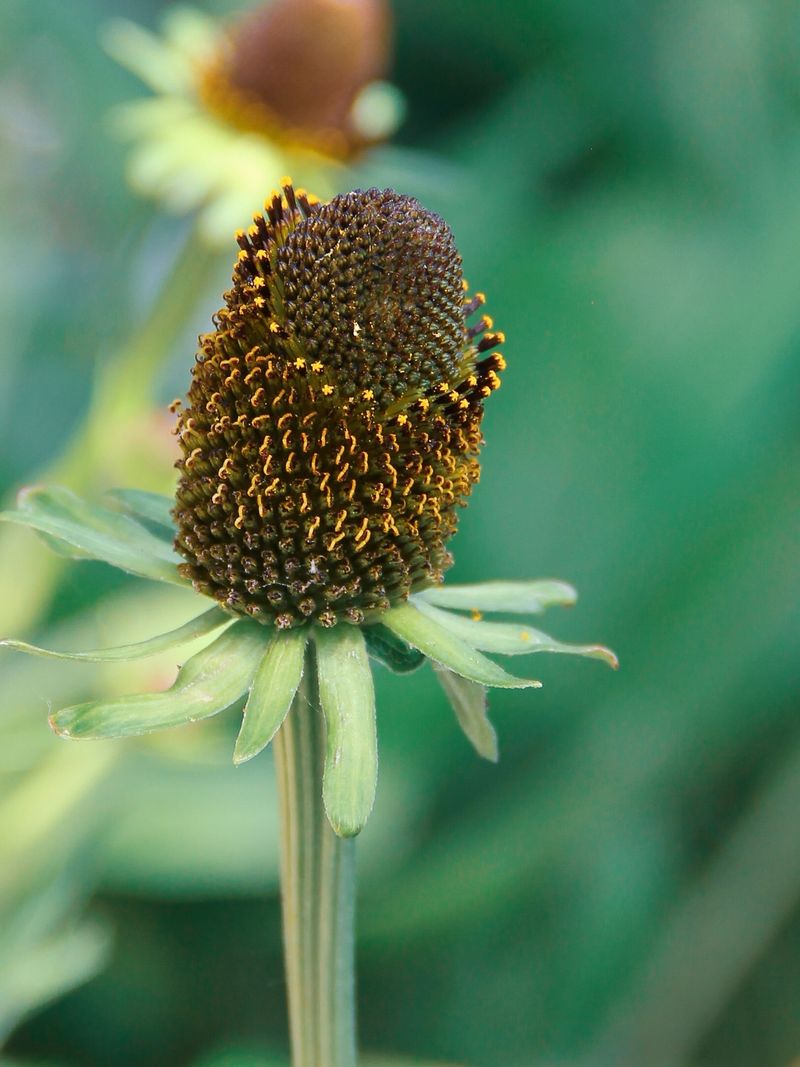Want a beautiful garden that takes care of itself? Oregon’s native perennials are nature’s gift to lazy gardeners. When left alone in fall, many native plants scatter their seeds naturally, creating new plants without you lifting a finger.
Your garden becomes a self-sustaining ecosystem while providing food and shelter for local wildlife.
1. Douglas Aster
Purple-blue daisy-like flowers blanket meadows across Oregon each summer. Douglas Aster thrives in both sunny spots and partial shade, making it incredibly versatile for different garden areas.
The fluffy seeds develop in early fall and scatter with autumn breezes. Birds particularly love these seeds as a food source, so you’re feeding wildlife while growing your garden.
2. Meadow Checkermallow
Pink spires of delicate blossoms attract butterflies all summer long. Meadow Checkermallow stands tall at 2-4 feet, creating vertical interest in garden borders or meadow plantings.
After flowering, the plant forms round seed pods that dry and crack open in fall. Each pod contains several seeds that easily sprout the following spring in sunny or partly shaded spots.
3. Farewell-to-Spring
Despite its name, this wildflower blooms from late spring through summer in Oregon, showing off cup-shaped pink flowers. Farewell-to-Spring grows quickly from seed, reaching 1–3 feet tall in a single season.
The distinctive seed capsules split open in fall, spilling tiny black seeds. Given bare soil and some sunshine, these seeds eagerly sprout the following spring, creating drifts of pink throughout your Oregon garden.
4. Oregon Sunshine
Woolly silver-gray foliage creates a striking contrast against bright yellow daisy-like flowers. Oregon Sunshine loves hot, dry conditions and poor soil, making it perfect for tough spots where other plants struggle.
The fluffy seeds develop after flowering and readily blow around the garden. Any sunny, well-drained spot becomes fair game for new plants to appear next spring.
5. Western Columbine
Nodding red and yellow flowers dangle like ornaments from delicate stems. Hummingbirds can’t resist the nectar-rich blooms of Western Columbine during spring and early summer.
The unusual star-shaped seed pods open from the bottom, spilling tiny black seeds. These seeds need very little to germinate, often finding homes in rock crevices, between pavers, or at the edges of garden beds.
6. Self-Heal
Small purple flower spikes rise above creeping stems, creating a colorful groundcover in Oregon meadows and lawns. Self-Heal earned its name from traditional medicinal uses for wounds and inflammation. The seeds drop directly below the plant after flowering, gradually expanding the patch each year.
It’s tough enough to grow in lawn areas, where it provides nectar for bees while remaining short enough to mow around.
7. Bigleaf Lupine
Stunning spires of blue-purple flowers rise above palm-shaped leaves in spring. Bigleaf Lupine creates dramatic vertical accents in meadow gardens and attracts numerous pollinators.
The fuzzy seed pods develop by mid-summer and audibly pop open when dry. Each pod contains several large seeds that readily sprout the following spring.
As a nitrogen-fixer, this plant actually improves your soil while it grows!
8. California Poppy
Bright orange cups glow against feathery blue-green foliage from spring through fall. California Poppies close their petals at night and on cloudy days, then reopen when the sun shines.
Long, thin seed pods form after flowering and split open when dry. The tiny seeds scatter everywhere, ready to pop up in any sunny, well-drained spot.
Although named for California, these poppies are native throughout Oregon too.
9. Oregon Iris
Elegant purple blooms with yellow markings appear in late spring, brightening moist meadows and forest edges. Oregon Iris forms clumps of narrow, sword-like leaves that remain attractive even when not in bloom.
The three-part seed pods dry and split open in fall, releasing round brown seeds. New seedlings often appear the following spring in damp areas of the garden.
10. Goldenrod
Arching sprays of tiny yellow flowers create a golden haze in late summer gardens. Despite common misconceptions, Goldenrod doesn’t cause hay fever—it’s actually insect-pollinated rather than wind-pollinated.
The fluffy white seed heads develop in fall, catching the breeze to scatter seeds throughout your garden. New plants emerge in spring, creating beautiful drifts in sunny areas.
11. Pearly Everlasting
Clusters of small white flowers with yellow centers top silvery-green stems throughout the Oregon summer. The flowers aren’t actually petals but special bracts that feel papery to the touch—hence the “everlasting” name.
The seeds develop with fluffy attachments similar to dandelions, helping them float on the breeze. They readily establish in sunny, well-drained spots, even in poor Oregon soil.
12. Oregon Geranium
Delicate pink-purple flowers with darker veins appear above deeply cut leaves from spring through summer. Oregon Geranium forms low mounds that work beautifully at the front of garden beds or in rock gardens.
The unique seed pods resemble a bird’s beak and explosively launch seeds when ripe. This clever dispersal method helps the plant spread throughout suitable garden areas without becoming invasively aggressive.
13. Fireweed
Tall spikes of magenta flowers light up roadsides and forest clearings throughout summer. Fireweed earned its name by being one of the first plants to colonize areas after wildfires.
The long seed pods split open in fall, releasing hundreds of seeds attached to silky white fluff. These float on the slightest breeze, establishing new plants anywhere they find open soil and sunshine.
14. Yarrow
Flat-topped clusters of tiny white flowers hover above feathery, aromatic foliage all summer long. Yarrow has been used medicinally for centuries to stop bleeding and treat inflammation.
The small seeds develop in late summer and fall, readily spreading to create new plants. Drought-tolerant and deer-resistant, yarrow thrives in Oregon’s poor soil where many other plants struggle.
15. Nodding Onion
Pink-purple globe-shaped flower clusters dangle from slender stems above narrow leaves. Nodding Onion adds whimsical charm to rock gardens and meadow plantings with its distinctive drooping blooms.
After flowering, the seed heads remain decorative as they dry. Small black seeds eventually scatter around the parent plant, sprouting readily the following spring in well-drained soil.
16. Showy Milkweed
Clusters of star-shaped pink flowers attract monarch butterflies and numerous other pollinators in summer. Showy Milkweed serves as critical habitat for monarch caterpillars, which feed exclusively on milkweed plants.
The fascinating seed pods look like pointed green fruits that split open to reveal seeds attached to silky fluff. These float away on autumn breezes, establishing new plants in sunny areas.
17. Western Coneflower
Golden petals surround a distinctive cone-shaped center that darkens as it matures. Western Coneflower brings long-lasting summer color to Oregon gardens and continues to look attractive into fall as the seed heads develop.
Birds, especially goldfinches, feast on the seeds directly from the plant. Those that fall to the ground readily sprout the following spring, creating cheerful colonies in sunny garden spots across the state.

